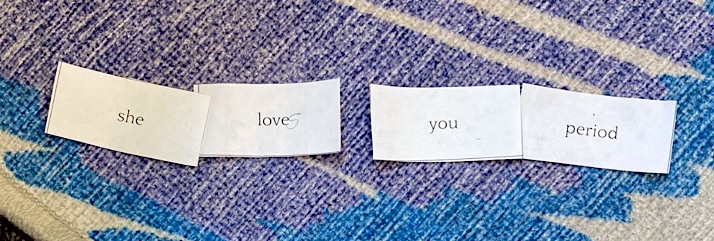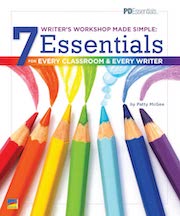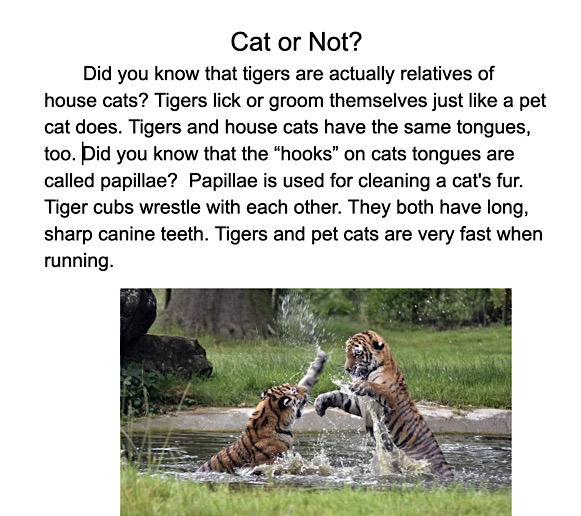3 Shifts Can Invigorate Our Grammar Instruction
By Patty McGee
 Not Your Granny’s Grammar
Not Your Granny’s Grammar
Visualize your grandmother, a student in a bygone era, some 50 or 60 years ago…
She strives to keep her drowsy eyes open during these sorts of lessons. The instructor, for what feels like an eternity, is on about the intricacy of grammar rules, the nuanced art of comma placement, and their myriad dos and don’ts.
Post-lesson, your poor grandmother is tasked with the challenge of inserting commas into sentences, and this feels like some cryptic puzzle. To make matters worse, it’s excruciatingly dull.
Leap forward through time, spanning the years since your grandmother’s grammar experience, to the present-day classroom. Has anything changed in the delivery of grammar instruction? At least something? Or not at all?
Whichever path history has taken, this blog post is for you. Let’s explore three shifts that will rejuvenate any approach to grammar instruction with an infusion of delight, curiosity, and play.
Grammar Shift #1: Envision the possibilities
To start shaking things up in grammar class, we might need to let go of how we learned grammar and think about what grammar instruction can look like. To begin, think about what is most important to you. For me, I value grammar instruction that is:
✻ Connected to writing
✻ Infused with joy, curiosity, and play
✻ Responsive to learners
✻ Spoken aloud by students
Do any of these ideas resonate with you too? If they do, keep them in mind as you dream up new ways to teach grammar. And feel free to add more to the list to make sure your students get the best of what you value.
Let your professional values drive your grammar instruction.
Shift #2: Prioritize grammar usage
The ultimate goal of grammar instruction is for students to use grammar effectively in their writing. Take, for example, this piece written by a younger middle-grade student. He used grammar in some pretty advanced ways, and he didn’t know all the fancy grammar terms (I know for sure because I taught him).
When you think about it, most writers, of any age, do not begin with identifying what grammatical moves must be used in their writing. “I need to use prepositional phrases, compound predicates, and the present perfect tense,” said no one ever. Students can and often do write with some command of grammar. What this means is that grammar instruction does not have to begin with the identification of parts of speech and sentence types. It can jump right to using parts of speech and a variety of sentence structures.
I’m not suggesting that grammar terms are unimportant. I am suggesting that they do not have to be the gatekeepers to usage. We no longer need to believe that if a student cannot identify a noun, they cannot use nouns. Students are using all sorts of nouns all of the time. This holds true with most grammatical concepts. If we prioritize usage, students are more likely to use grammar to craft their writing.
Make the main goal of grammar instruction using grammar in writing.
Shift #3: Make Time for Grammar Play
Playing with grammar? Absolutely! There are plenty of ways to deepen learning through playful interactions with grammar. One of my favorites is using word cards (bit.ly/grammarwordcards). I created cards with different parts of speech, punctuation marks, endings, and even blank ones. I laminated the cards, cut them out, and put them in an envelope to use over and over by pairs and trios of students. They love it!

Some other ways of using word cards, which I like to call “Word Card Challenges”:
- Create a sentence in which the words are in alphabetical order.
- Create two simple sentences. Then try to make them a compound or complex sentence.
- Create the longest simple sentence you can and ensure it is not a run-on.
- Create a compound sentence. Turn it into a complex sentence.
- Write a sentence that has three commas in it.
After students create sentences, ask them to write them down in their grammar notebooks, labeling them with what they know about the sentences they created (for the example above, the student(s) might write she is singular and needs a singular verb, loves.)
Create playful interactions with grammar.
Grammar can be a power tool
These three simple yet powerful changes in grammar instruction will make a big difference in how students use grammar as a creative tool to shape their writing.

Patty regularly consults with teachers and principals in Grades K-12 on literacy instruction. Her favorite moments are in the classroom with both educators and students. A former classroom teacher, media specialist, and staff developer, she was a 2002 recipient of the prestigious Milken Award for Excellence in Education. Read her other MiddleWeb articles, follow her @pmgmcgee and LinkedIn. Visit her website at www.pattymcgee.org.



































